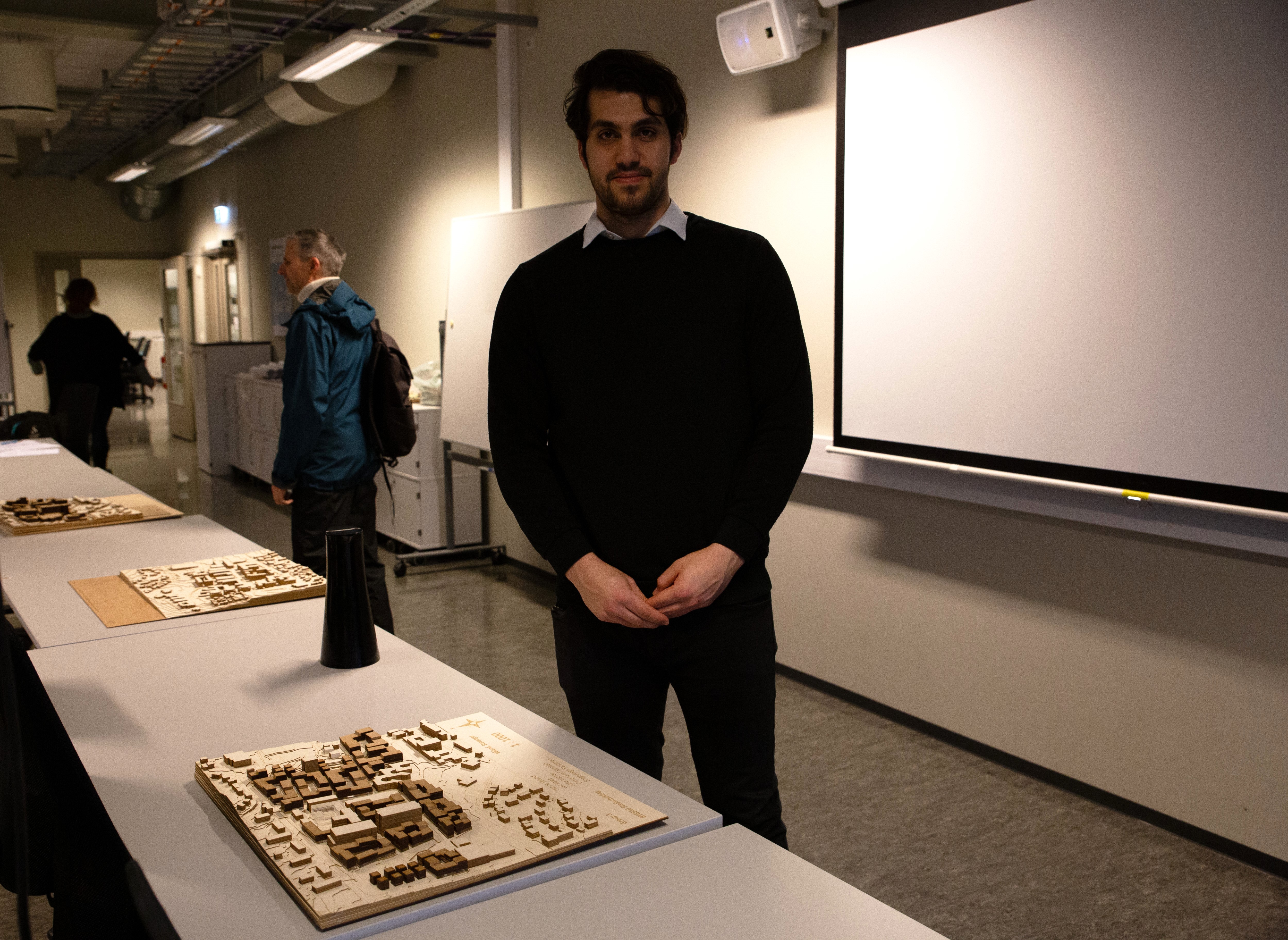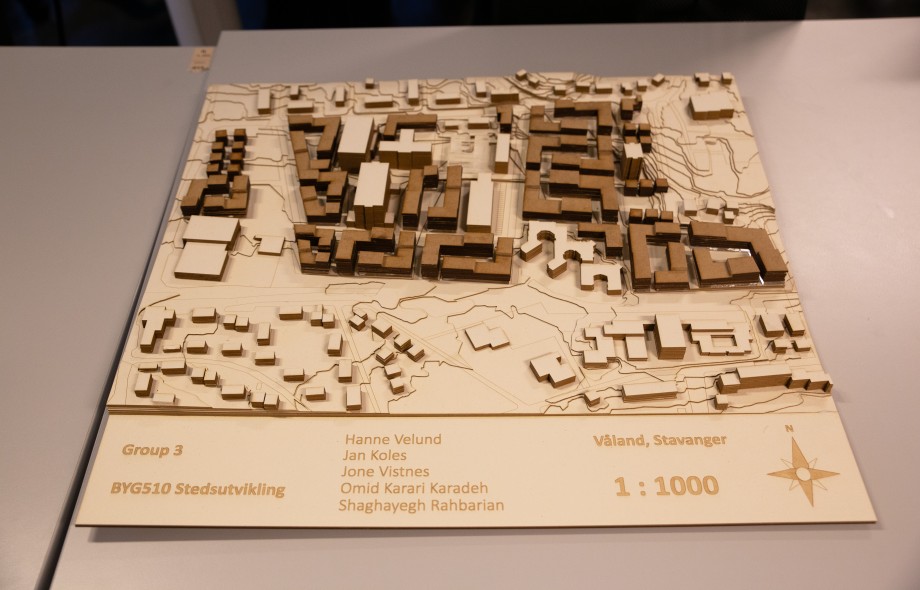Omid Karari Karadeh is a student at City and Regional Planning, and had a project work in collaboration with local businesses. – Absolutely essential to make contact while they're students, a city planner in Stavanger Municipality says.

– We only had six weeks to finish the project. I think we all did a great job, Omid Karari Karadeh says. He is an exchage student at the University of Stavanger (UiS).
– On the master's degree in City and Regional Planning we often use relevant issues that the students should solve as project work in groups, as a kind of simulated professional reality, associate professor in Urban Planning, Daniela Müller-Eie says.
Cooperation with local businesses
This autumn they've collaborated with Stavanger Municipality and Stavanger Development about the issue around how the hospital area should be developed as the Stavanger University Hospital moves to Ullandhaug.
In the subject Placemaking (BYG510) the students have presented suggestions based on location analysis they've done at the same location in the subject Urban Analysis and Planning Methods (BYG500).
– The presentation was a really good experience. The good thing was that we head visitors from Stavanger Municipality. It made this presentation a bit special for all of us. More pressure, maybe. But at the same time: more motivation. I'm happy because we explained everything well, I guess, Karadeh says.
– What was the most diffucult part of the project?
– Since we had to consider different aspects, it could be difficult. Because there's a hospital area, and the buildings have a hospital structure. And then the question is: Are we going to reuse them or demolish them? There's no good connection there, so we should demolish some of them. But in terms of sustainability, they shouldn't be demolished. This was the most challenging part for the area, in my opinion.

– Do you feel that this work can be easily transferred to what it's like in real life?
– Yes, I guess in the long term it could be. We didn't consider the feasibility economically. One of the aspects that we considered, was how to make it more convincible for the developers, land owners, the Municipality, and the County Council. In my opinion, we considered most of the aspects.
– The students have worked methodically well
Architect and urban planner Ingrid Eileraas works in the department for urban development in Stavanger Municipality. Together with three other colleagues she visited UiS, and they're all impressed over what the students managed to do in six weeks.
– City and Regional planning is enourmously complex, so that they've managed to create a new urban area with different functions – with housing, shops, schools, kindergartens and so on – is very impressive. They've also worked methodically well, I think. They've done a good background analysis, and used that actively in the result.
– Very useful for us to get some new ideas
Eileraas thinks that the collaboration with UiS is important.
– I think it's absolutely essential for both us in Stavanger Municipality and the students at UiS to make contact while they're still students. It's very difficult to graduate the university not knowing anything about what the real world is concerned about, and what the urban planning environment is concerned about. That's really important.
– The students have worked with stuff we're also working with. In that way, it's very useful for us to get some new ideas and thoughts, and to hear what the students emphasize when planning a city. So I think it's a win-win for everybody, she adds.
Karadeh comes from Iran, but is an exchange student at UiS from the technical university Politecnico di Milano in Italy. He's not sure yet what his dream job is:
– I study "Urban Planning and Policy Design" in Milano. Sometimes I'm into the city policies. I really like the strategies and the regulations. Setting these kind of regulations are really interesting to me. I'm very interested in these topics, he concludes.